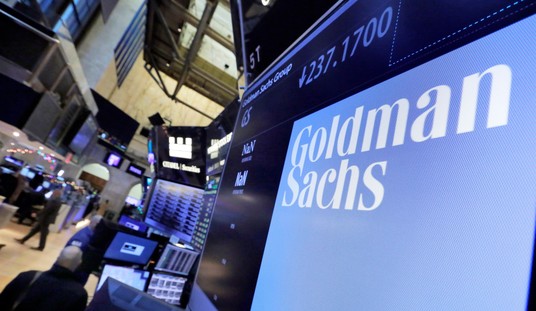ObamaCare’s critics have had a bad week. On Thursday, President Obama announced that 8 million people have enrolled in new health insurance plans through the Affordable Care Act’s marketplaces, and a significant portion of them are young Americans. Yes, we need to learn more about the numbers. And yes, a lot needs to happen to complete the ACA’s phase-in. The debate about how well the law is working is not over. But the initial figures are encouraging, and Mr. Obama is right to insist that continued Republican demands for repeal are unproductive and unwise…
The Obama administration has a lot more work to do: After this year’s big push, the marketplaces are not even half way to enrolling the 25 million or so customers the CBO expects eventually will sign up. Temporary measures to provide financial stability to the marketplaces will phase out over the next few years. And narrower networks must not result in people lacking timely access to basic care. Even so, the news about Obamacare is good, even if Republicans can’t quite bring themselves to admit it yet.
President Barack Obama has laid out the blueprint he thinks his party should follow on Obamacare as the midterms approach: “forcefully defend and be proud” of the law — and then move on, hitting Republicans for Washington dysfunction and inaction on the economy…
The president’s advice reflects what his aides have been saying privately for weeks — including in conversations to anxious Democratic campaign officials: They believe voters are ready to move on, and that they can use their economic fairness argument to boost their base’s turnout in a way that can counter the Republicans’ base appeal on Obamacare repeal…
“The president is absolutely right,” DNC communications director Mo Elleithee said. “Despite every piece of data showing that the ACA is helping millions of Americans and surpassing expectations, Republicans are living in an alternate reality. They are obsessed with repeal, despite the fact that Americans overwhelming disagree with them. That’s a contrast that every Democrat should feel good about making.”
President Obama opened his press conference Thursday with a bold proclamation that “the repeal debate is and should be over.” But his declaration of victory in the long-running war over his health care overhaul did not last long. Only five questions later, he was forced to offer a softer, almost wistful acknowledgement of the reality that there are many more battles to wage and the debate could go on for years…
“That’s going to take more time. But it’s not for lack of trying on my part,” he admitted. He reached back for a historical analogy, noting that opponents of Medicare fought for years after that law’s 1965 passage. “So we’ve been through this cycle before. It happens each and every time we make some strides in terms of strengthening our commitments to each other and … we expand some of these social insurance programs. There’s a lot of fear-mongering and a lot of political arguments and debate, and a lot of accusations are flung back and forth about socialized medicine and the end of freedom.”
Eventually, he said, the public realizes that the law works and “then we move on.” But he acknowledged, “I don’t know how long it’s going to take.”
Shortly after the Supreme Court’s decision on Obamacare, the CBO projected that 9 million people would buy Obamacare-compliant insurance through newly established government-run exchanges. Now, after an enrollment period that his administration expanded by about two months—to more than half a year—President Obama says that 8 million people have “signed up” for (but in many cases haven’t actually bought) insurance through those exchanges.
The Obama administration’s stated goal was to have 39 percent of those who bought such insurance be between the ages of 18 and 34. Now Obama says the actual percentage is 28 percent.
Only in Washington, D.C. could someone put up numbers like these and then brag about them.
But, in truth, all of this talk about enrollment numbers is beside the point. Back when the Democrats defied public opinion and rammed Obamacare into law using the Cornhusker Kickback, Gator Aid, the Louisiana Purchase, and all the rest of the unseemly gimmicks they employed, opponents of Obamacare didn’t claim that the reason why the health-care overhaul would be bad was because it wouldn’t hit the coverage numbers the CBO projected.
What the administration has not told us is how many of those 19 million people already had coverage and lost it because of the Affordable Care Act. Or how many of them would have been covered by insurance this year and changed plans to get a big subsidy. Or how many of them thought they were going to get a better health plan but found out that their doctor is not in the network. Or how many of them spent more on insurance than they felt they could afford because there were no lower-cost alternatives. Or how many will find out that the taxpayer subsidy they are receiving will turn out to be too high—they might get a raise in a few months or work some overtime and will make a little too much money this year, or it might just be that the government’s computers didn’t get it right—and will have to repay the Treasury hundreds and perhaps thousands of dollars?
The president’s health plan is a hugely complicated enterprise. It has limped to the end of the first open enrollment period with numbers that look too good to be true. If what we care about is getting insurance for people who otherwise would not be covered, then the numbers are too good to be true.
One factor that the CBO did not include was enrollees who leave the exchanges because their income shrinks thereby qualifying them for Medicaid. The U.C. Berkeley Center for Labor Research and Education recently estimated that just under one-fifth of enrollees on Covered California would leave the exchange for Medicaid. Combined with people who left because they gained employer-based coverage, the Center found that Covered California would retain about 57.5 percent of current enrollees.
If that occurs across all exchanges,then the final enrollment number will be closer to 4.6 million. Of course, not every state is California (thank goodness), so the amount of churn due to Medicaid and employer-based coverage will vary across the nation. Yet those factors will cause the eight million figure to be revised downward as the year goes on.
Each time that happens in the coming months, the media will hark back to the President’s victory dance. For a public that doesn’t much trust Obama on health care, each revision will likely erode that trust a little further. They will also provide his political opponents with more opportunities to claim Obamacare isn’t working as well as the President claimed.
I assume that liberals will declare victory, with some reason, if Obamacare meets the C.B.O.’s current (reduced) expectations, this year and beyond. But what if it doesn’t? Suppose that by the end of 2016, when the C.B.O. expects the total number of uninsured to have fallen by 25 million, it’s only fallen by, say, 15 million instead — and most of the previously uninsured are getting coverage through Medicare, while the exchanges are mostly populated by people whose prior individual-market coverage was cancelled, either in 2014 or once grandfathering runs out. Will that be a success story? Presumably there’s some kind of shortfall that the law’s supporters would consider, if not a sign of outright failure, than at least a reason to be fairly disappointed with how Obamacare has worked. It would be helpful to know what they think that long-run number lies…
Does Obamacare need to hold inflation to the low 2011-2012 pace (a pace, again, that many liberals wanted to credit to its early impact) in order to be counted as a cost-containing success? Does it just need to hold inflation below, say, a 10 or 20-year average? (Note that both on its own terms and relative to overall inflation, health cost inflation had been declining for seven years before Obamacare was passed — so just holding either rate below the average of 2000-2010 would not actually be that impressive.) In other words — what does the Affordable Care Act have to achieve in order to live up to its name?
Health outcomes. It’s been crowded out by the website drama like everything else, but one of the major divides between Obamacare supporters and skeptics was over whether, and to what extent, the law would literally be a lifesaver — with writers like Klein famously invoking “lives saved” figures in the hundreds of thousands during the run-up to the law’s passage, while doubters cited the surprisingly-weak link between insurance status and health outcomes, and raised the potential public-health downsides, in terms of innovations lost or never sought, of increasing government control…
So here, too, I’m curious what liberals expect to see, what they’ll count as vindication, what would disappoint them, and what kind of results they think will be sufficient to prove that Obamacare is, in fact, a lifesaving success.
So who has, in fact, been harmed by Obamacare? The first question, of course, is what “harmed” means. But let’s define it as anyone who faces higher premiums, or higher deductibles — adding up to a total higher cost — and/or a narrower choice of hospitals, doctors and prescription drugs than they had before. For them, health care is a more expensive and troublesome proposition than it was before Obamacare…
Everything we know about the system suggests there are millions of Americans in that position, but how many? “There is no hard number,” says health care analyst Bob Laszewski. The reasons are as complicated as Obamacare itself…
The bottom line, according to Laszewski: “We have literally millions of people each impacted a bit differently.” That’s hard to quantify and turn into a neat political argument…
Will people who pay more, or who get less, or both, take their Obamacare unhappiness out against Democrats this November? Some surely will. But how many, and how strongly motivated they will be, will probably remain unknown until after the polls have closed.
As much as Obama would like to think the debate is over, it isn’t. And it’s not just because the politics haven’t settled down. It’s because there’s still important evidence to come.
The next moment of truth will be when insurers start announcing the Obamacare rates they’re going to charge next year, in a series of disclosures that will start in the summer and then continue in the fall. Any big increases are sure to become fodder for attack ads, even if they’re not widespread throughout the country.
Obama seemed to be anticipating the possibility that some premium hikes will happen, somewhere. “We suspect that premiums will keep rising, as they have for decades,” he said on Thursday — but he added that health care spending has been rising more slowly since the law took effect.
And after that, there will be more enrollment periods, and more chances to sign up new customers. But there’s also the potential for more trouble as small businesses switch to health plans that meet Obamacare standards — because some are likely to face sticker shock compared with what they had before.
“This is a three-year process. We’re in the first quarter of the first year,” said Gruber. Even so, he said, “the signals are as good as we can expect at this stage.”








Join the conversation as a VIP Member